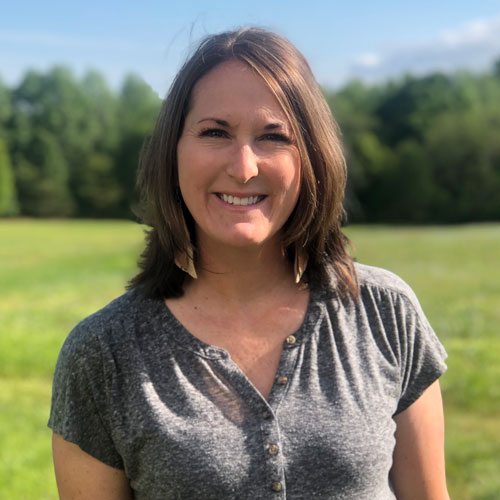It's All Fun and Games: From Recreational Therapy to Teaching By Randi Plake This article appeared originally in the Fall 2020 issue of Frontiers Magazine.
 Spartanburg Methodist College graduate Heather Waldrep ’98 pivoted from a career in therapeutic recreation to teaching kindergarten. Her education and eagerness to learn positioned her to make this transition a success – and she still gets to have fun on the job.
Spartanburg Methodist College graduate Heather Waldrep ’98 pivoted from a career in therapeutic recreation to teaching kindergarten. Her education and eagerness to learn positioned her to make this transition a success – and she still gets to have fun on the job.
Waldrep earned an associate degree from SMC in 1998 while juggling her responsibilities of being the student body president and a resident assistant with her cross-country running and work-study position.
Despite her full schedule, Waldrep found time to get to know her professors, whom she respected and appreciated. She said, “The relationships I had with the professors was preparation in learning how to communicate with adults and my superiors.”
After graduating with an AA, she transferred to Clemson University where she majored in recreational therapy. She felt prepared to take the next step in her education because of the skills, experience, and knowledge she gained at SMC . “The classes I took at SMC were a great foundation for the continuation for the rest of my degree,” says Waldrep.
Waldrep began her career in the recreational therapy field where she worked 18 years in a health care setting. Thirteen of those years were spent at St. Francis in Greenville. Although she enjoyed the work, she realized it was time for a change, which ultimately led her from working with older adults to teaching 5-year-olds as a kindergarten teaching assistant.
“Being a kindergarten teaching assistant is totally different from recreational therapy, but is such a blessing in itself,” she said. “I come alongside the teacher I’m with and help her in the everyday life of kindergarten. I have grown to love this new transition in my career and life!”
Though the differences between therapeutic recreation and early education teaching are stark, Waldrep noticed some similarities. “With both [careers] I need patience, creativity, a positive attitude, ways to keep both patients and students motivated, and to teach something daily so they can learn new skills,” she said.
In the spring of 2020, Waldrep’s job once again shifted, but this time her industry changed, not her career. Like schools across the nation, Waldrep’s class moved to remote learning due to COVID-19. To stay connected with her students and parents, Waldrep and her fellow teachers created a class Facebook group where they shared videos of lessons and reading books, and parents shared photos of their children doing their work. “It was a great outlet for communication and interaction with the parents and our kids. We also used Zoom to talk with them ‘live’ individually and as a whole class. The kids were so happy to see us and their classmates this way. Let’s just say they were very talkative since they missed each other so much!” she says.
Waldrep also participated in a parade that went “through all the neighborhoods and areas where we could honk and wave at our students. I may have cried seeing some of our kindergarteners’ faces,” she says.
Through a career shift and a pandemic, she credits SMC for giving her a solid base to build her career on. While so much is still unknown about what the classroom will look like in the future, Waldrep is still committed to serving students. “Having the parents tell me how much their children missed us and how their faces would light up and their mood was better after getting to interact with them” gives Waldrep motivation to continue striving to be a positive light for each of her students.
